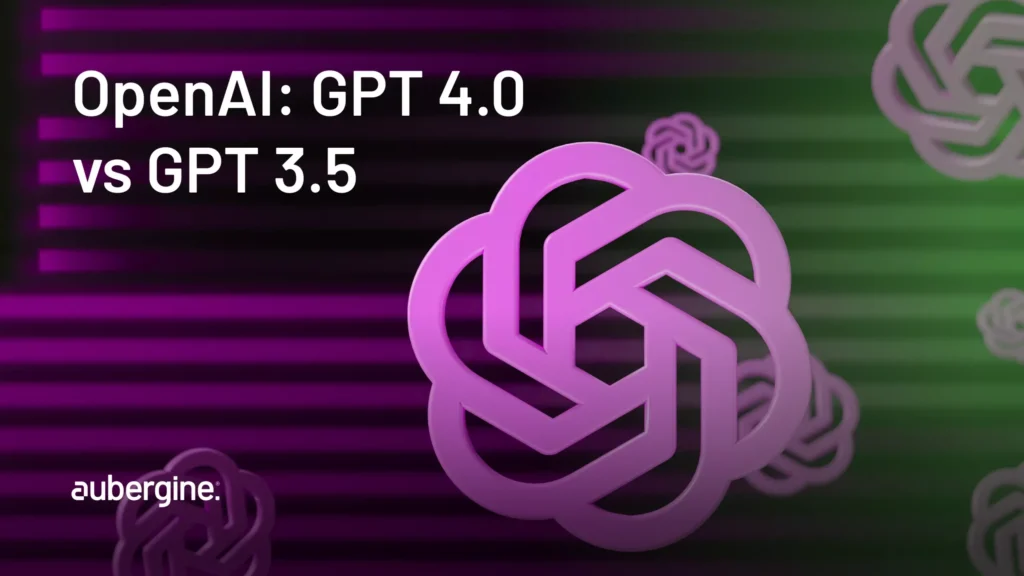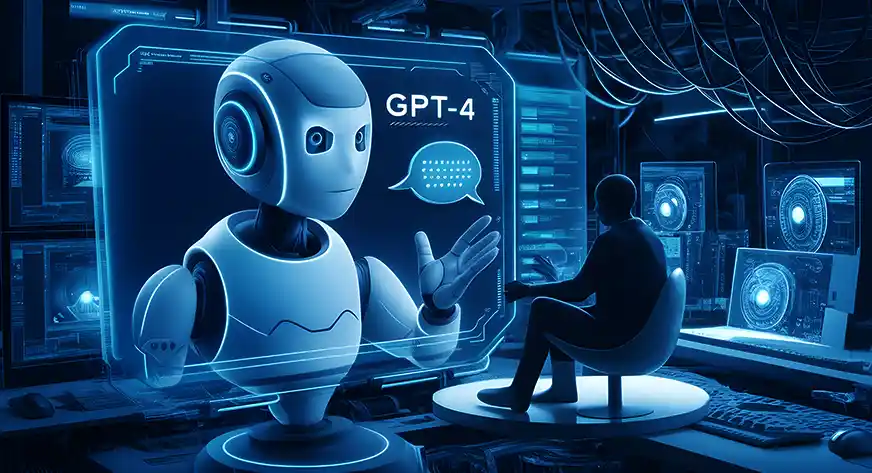Difference Between GPT-3 and GPT-4
Artificial intelligence (AI) has made remarkable strides in recent years, with generative pre-trained transformers (GPT) leading the way in language models. GPT-3, released by OpenAI in 2020, revolutionized the field of natural language processing (NLP). However, GPT-4, the successor to GPT-3, has taken AI capabilities to the next level. In this article, we’ll explore the differences between GPT-3 and GPT-4, including improvements in performance, features, and real-world applications.

What is GPT-3?
Generative Pre-trained Transformer 3 (GPT-3) is a state-of-the-art language model developed by OpenAI. It is based on a transformer architecture and uses deep learning to generate human-like text. GPT-3 was trained on a massive corpus of diverse text data from books, websites, and other sources, allowing it to generate coherent and contextually relevant text on a wide range of topics.
GPT-3 has 175 billion parameters, making it one of the largest language models at the time of its release. These parameters are the weights that the model adjusts during training to make predictions. The vast size of GPT-3’s model allows it to understand and generate text with impressive accuracy, making it suitable for a wide array of applications, including:
- Text generation and completion
- Translation
- Question answering
- Summarization
- Chatbots
Despite its success, GPT-3 is not without limitations, such as producing biased or incorrect responses, lacking real-world understanding, and sometimes failing to generate coherent text for long passages.

What is GPT-4?
GPT-4 is the latest iteration in OpenAI’s series of language models. It builds upon the foundation set by GPT-3 but comes with several significant upgrades. GPT-4 is more powerful, sophisticated, and accurate than its predecessor, with improvements in various areas such as language understanding, problem-solving, creativity, and overall performance.
While OpenAI has not disclosed the exact number of parameters in GPT-4, it is known to be a much larger model than GPT-3. It is designed to better handle complex tasks and generate more accurate and contextually aware responses. GPT-4 is also more fine-tuned to reduce biases and improve the ethical implications of AI-generated content.
Some of the key features of GPT-4 include:
- Advanced reasoning capabilities
- Multi-modal abilities (text, images, and beyond)
- Better understanding of nuanced instructions
- Improved factual accuracy and reduced hallucinations
GPT-4 is expected to excel in areas where GPT-3 struggled, such as generating long-form content, handling ambiguous queries, and providing more reliable and contextually correct responses.

Key Differences Between GPT-3 and GPT-4
1. Model Size and Parameters
One of the most notable differences between GPT-3 and GPT-4 is the model size. GPT-3 has 175 billion parameters, while GPT-4 is believed to have even more parameters, potentially in the trillions. The increased number of parameters allows GPT-4 to process and generate more sophisticated responses, improving its overall performance.
2. Language Understanding and Accuracy
GPT-4 has a significantly improved understanding of language compared to GPT-3. While GPT-3 is capable of generating impressive responses, it occasionally struggles with understanding complex instructions, generating long-form content, and maintaining coherence over extended text. GPT-4 addresses these issues by offering enhanced language comprehension, making it more adept at producing contextually accurate and coherent outputs.
In addition, GPT-4 reduces the occurrence of “hallucinations” (i.e., generating factually incorrect or nonsensical information) that were sometimes present in GPT-3 responses. This makes GPT-4 a more reliable tool for applications that require high levels of accuracy, such as legal writing, medical advice, or technical documentation.
3. Multimodal Capabilities
Another major advancement in GPT-4 is its multimodal capabilities. GPT-3 is primarily a text-based model, meaning it can only process and generate text. However, GPT-4 goes a step further by incorporating the ability to understand and generate content in multiple modalities, including text, images, and potentially even video.
For example, GPT-4 can analyze images and generate descriptions, captions, or even respond to questions based on visual inputs. This opens up new possibilities for applications in areas such as content creation, advertising, healthcare, and more. The ability to process multiple types of data makes GPT-4 a more versatile and powerful model than GPT-3.
4. Fine-Tuning and Customization
GPT-4 offers improved fine-tuning capabilities compared to GPT-3. Fine-tuning is the process of training the model on specific data sets to improve its performance in certain areas. GPT-4 allows for more granular control over the customization process, enabling developers to tailor the model’s behavior and responses more effectively.
This feature is especially useful for businesses and organizations that want to use AI for specific tasks or industries, such as customer support, legal research, or content moderation. Fine-tuning allows GPT-4 to be adapted to niche use cases with greater precision than GPT-3.
5. Ethical Considerations and Bias Reduction
One of the major criticisms of GPT-3 was its tendency to produce biased or harmful content, particularly in cases where it was trained on unfiltered or problematic data. OpenAI has made significant strides in addressing these ethical concerns with GPT-4.
GPT-4 is designed with a more robust safety framework to reduce the generation of harmful or biased content. The model is trained to better recognize and mitigate issues related to discrimination, misinformation, and offensive language. This makes GPT-4 a more ethically sound choice for applications that require sensitivity to diverse audiences.
6. Performance on Complex Tasks
GPT-4 is particularly strong in solving more complex tasks, such as reasoning, understanding abstract concepts, and providing more detailed explanations. While GPT-3 was already capable of impressive performance in many tasks, it sometimes struggled with intricate problem-solving or tasks that required deeper levels of analysis.
GPT-4 improves on this by excelling at tasks that require multi-step reasoning or a more in-depth understanding of context. For example, GPT-4 can better answer questions that involve understanding long or ambiguous sentences, providing explanations for complex scientific or technical topics, or generating creative writing with more structure and coherence.
7. Real-World Applications
Both GPT-3 and GPT-4 have a wide range of applications across various industries, including healthcare, education, customer service, and entertainment. However, GPT-4’s enhanced capabilities make it more suitable for high-stakes and critical applications. Some of the real-world applications where GPT-4 outperforms GPT-3 include:
- Healthcare: GPT-4 can assist in diagnosing medical conditions, providing accurate medical information, and supporting healthcare professionals with clinical decision-making.
- Law: GPT-4 is better suited for legal document analysis, contract generation, and even legal research, thanks to its advanced reasoning and factual accuracy.
- Creative Writing: GPT-4 can generate more creative and coherent content, making it ideal for use in advertising, media, and content creation.

Conclusion
In summary, while GPT-3 was a groundbreaking achievement in natural language processing, GPT-4 represents a significant leap forward. With improvements in model size, language understanding, multimodal capabilities, fine-tuning, and ethical considerations, GPT-4 is a more powerful, reliable, and versatile AI model. Whether you’re a developer, business owner, or AI enthusiast, GPT-4 opens up new possibilities for leveraging artificial intelligence in a wide range of applications.
The differences between GPT-3 and GPT-4 illustrate the rapid pace of innovation in the field of AI. As these models continue to evolve, we can expect even more advancements in language understanding, creative applications, and real-world problem-solving.





